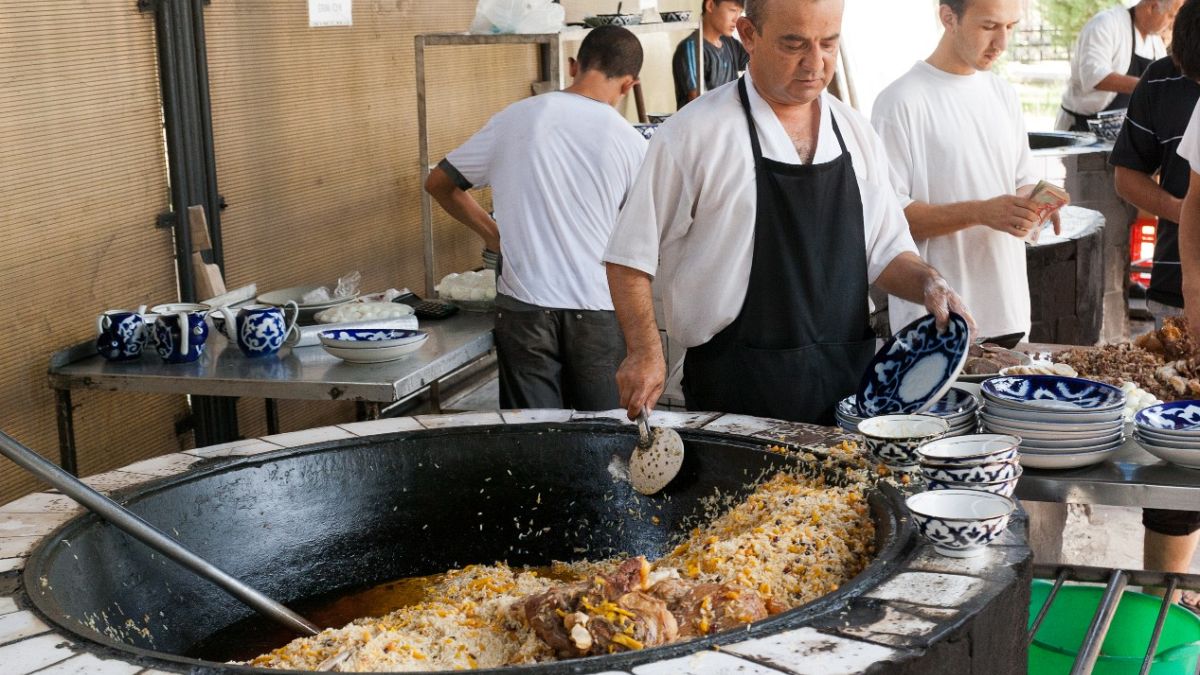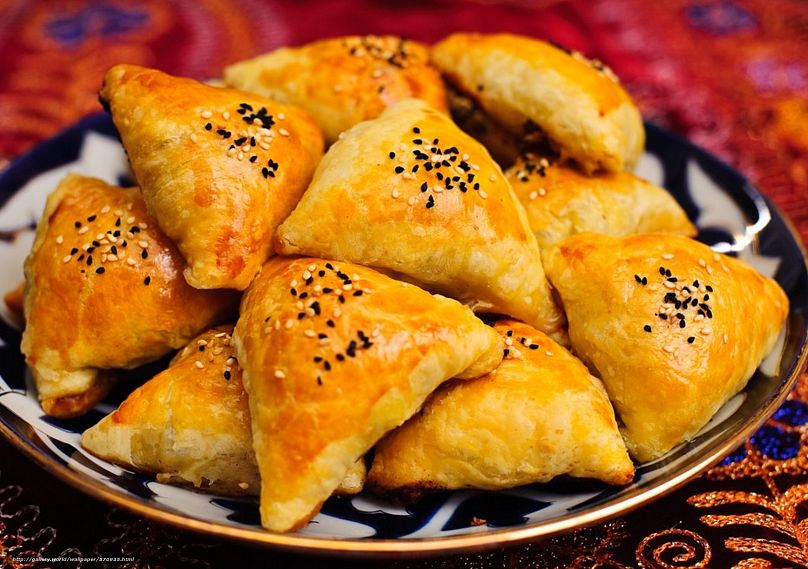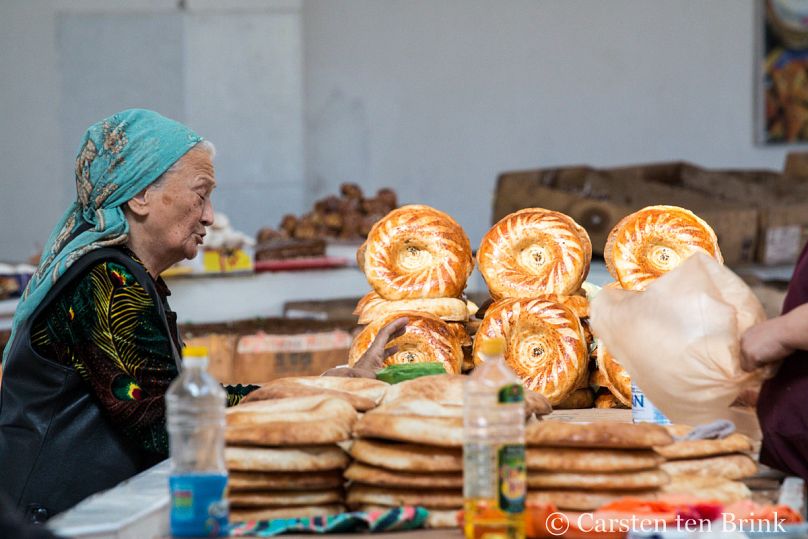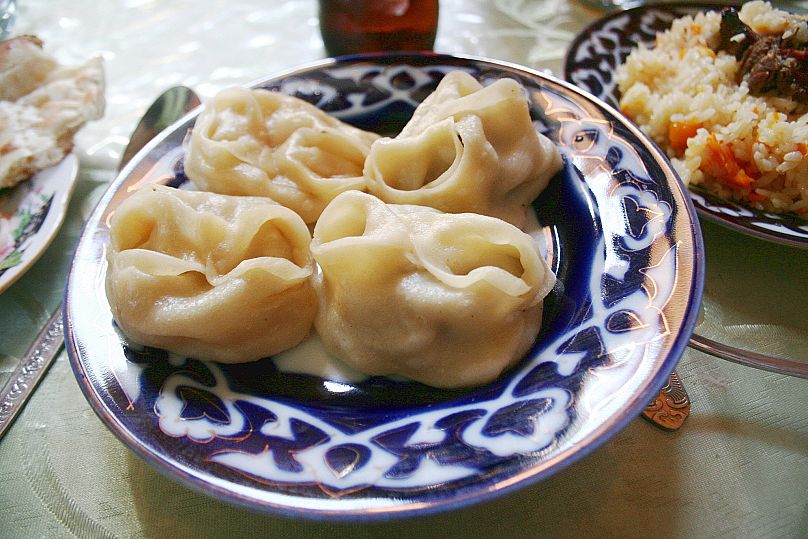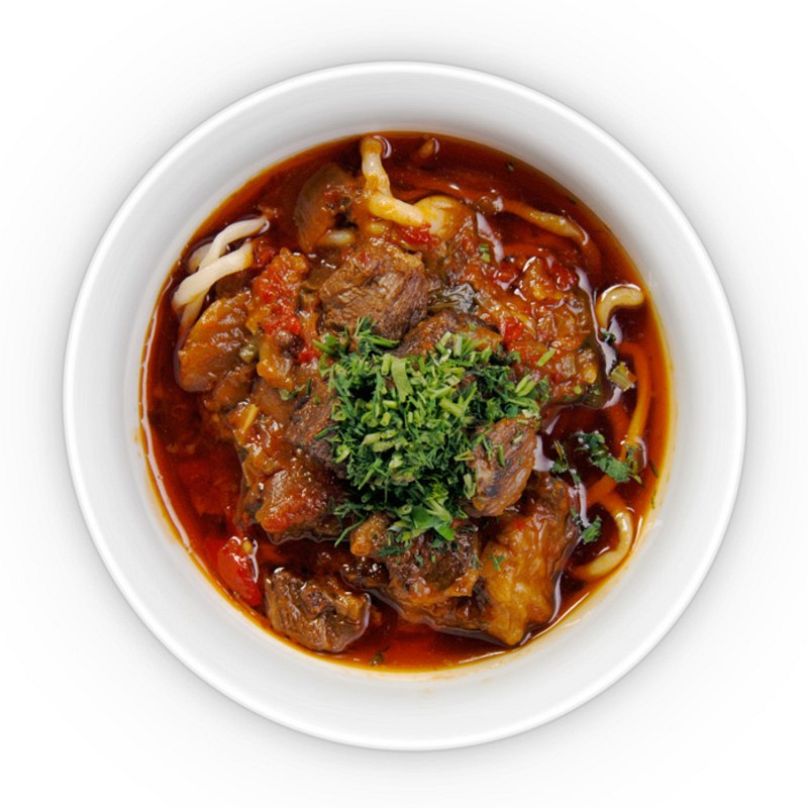Uzbekistan’s territory was a central route on the Silk Road, and the people, ideas and goods that travelled through it have intrinsically become part of Uzbekistan’s culture, including its cuisine.
As Uzbekistan gears up for celebrations surrounding the 30th anniversary of its independence from the USSR on September 1, we travel back in time and explore the country's history and culture through its cuisine.
Uzbekistan has been inhabited since Neanderthal man first lived there during the Old Stone Age, around 300,000 to 40,000 years ago. After that, the country's story gets more diverse. In the first millennium BC, Iranian nomads occupied the land, then the Scythians, Achaemenids, Greeks, Arabs and Mongols, according to Sophie Ibbotson, Uzbekistan's official Ambassador for Tourism and consultant to the World Bank.
Three Silk Road cities Samarkand, Bukhara and Khiva also fall on Uzbek soil. And the people, the ideas and goods that travelled the route have become part of Uzbekistan’s culture, including its cuisine.
Largely thanks to the Silk Road, Uzbekistan's culinary tradition is made of a mix of East and West, offering roasted meats and tandoor-baked bread from Central and Eastern European countries like Turkey, Iran, and Morocco, as well as steamed dumplings and noodles found in the likes of China, Nepal, and other Eastern Asian countries.
After becoming independent from the Soviet Union, the cuisine in Uzbekistan played a role in growing national unity, developing a distinct identity “through the savvy use of national cuisine”, according to food historians Glenn Mack and Asele Surina.
The country’s culinary tradition has also been transformed by globalisation, and migrations from other former Soviet states have also brought more diversity onto plates.
Some food historians think that original Uzbek cuisine took its present form recently, only 120-150 years ago, when the country also starting experimenting with products and culinary techniques from European dishes.
Uzbekistan has distinct geography consisting of deserts, oases, valleys and mountains, and they have made use of their land. Uzbeks extensively cultivated grain and domesticated livestock. And the investment granted an abundance of produce, which also enriched their cuisine.
Most traditional recipes today have a farm-to-table model and a common ingredient: meat and animal fat. Staple ingredients also include flour (for the preparation of recipes such as dumplings and noodles), rice, vegetables, and spices such as cumin, pepper, coriander, cinnamon and bay leaves.
National dishes: From party dish plov to Shashlik 'Caucasus kebabs'
The variety and rich history found in Uzbekistan's cuisine also extend to its national dishes.
Here's our selection of those not to be missed and their backstory:
Plov
Uzbekistan's national dish, plov, honours the country’s abundance of agriculture and livestock and is characterised by the preparation of meat and grains (usually rice) together. Its main ingredients are lamb fried with onions and yellow or orange carrots.
There are over 200 different varieties of plov and it has been featured on UNESCO's list of the Intangible Cultural Heritage of Humanity. Competitions to make the best plov are held throughout rural and urban communities in Uzbekistan. These events hold great social and cultural importance and even the most renowned chefs take part.
Plov is served at most big events, featuring as a central dish at weddings. There is even a saying that states guests can only leave their host’s house after they have been offered plov. I
Tashkent, the capital of Uzbekistan, and Samarkand in the southeast, are both great places to try plov. A visit to the city market will offer a look at the impressive way in which the dish is cooked, in gigantic iron cauldrons called kazans.
Uzbek samsas
Samsas look much like South Asian samosas: triangle-shaped pastries stuffed with meat or vegetables. But samosas were introduced to the country by Central Asian traders in the 13th and 14th centuries, while original Uzbek samsas are usually stuffed with meat and onions and are baked in tandyr (clay ovens), never fried.
Uzbek bread, a table staple
In Uzbekistan, a meal without bread is considered incomplete. Bread is baked in tandyr and is usually round in shape and flat. Travelling across the country you can find unique patterns stamped onto the bread as well as many nuances in flavour. Each region has its own way of making the dough rise and its own baking technique, which gives the bread a unique and distinct flavour.
Shashlik, the Caucasus kebab
Shashlik is one of the many types of kebab dishes that originated in the Middle East, consisting of skewered and grilled cubes of meat. Variations of the recipe can also be found in Mediterranean cuisine and across the Caucasus region.
Several varieties of shashlik involving different meats exist around the country, but it's rare for pork to make an appearance as a majority of the population is Muslim.
Manti dumplings
Similar to Samsa, manti is a large dumpling filled with meat, but in this case, they are steamed in a special pot. Mantis first came to Uzbekistan and Central Asia from China, spreading across Russia and other European countries. They are usually served with yoghurt and herbs for dipping, which is another Uzbek classic.
Uzbek apricots, urik, and other dried fruits and nuts
In Uzbekistan, smaller breeds of apricot are called urik, while the name apricot is given to the larger fruit Europeans are most familiar with. Urik are often pitted and dried out; dried apricots, raisins and different types of nuts are favourites of the Uzbek people.
The country’s climate permits farmers to grow different kinds of apricots for most of the year and they can dry them naturally under the sun or even in the shade. Restaurants and bar tables often have a plate filled with various dried fruits and nuts. In bazaars and supermarkets, you can find also find a huge variety of them.
Lagman, Uzbek soup
Lagman, a hearty soup with hand-pulled noodles, beef or lamb and vegetables draws on the country’s Chinese and Nepalese heritage. The recipe is also popular in many Asian countries, but Uzbeks have been changing and supplementing it, making it into an Uzbek staple.

